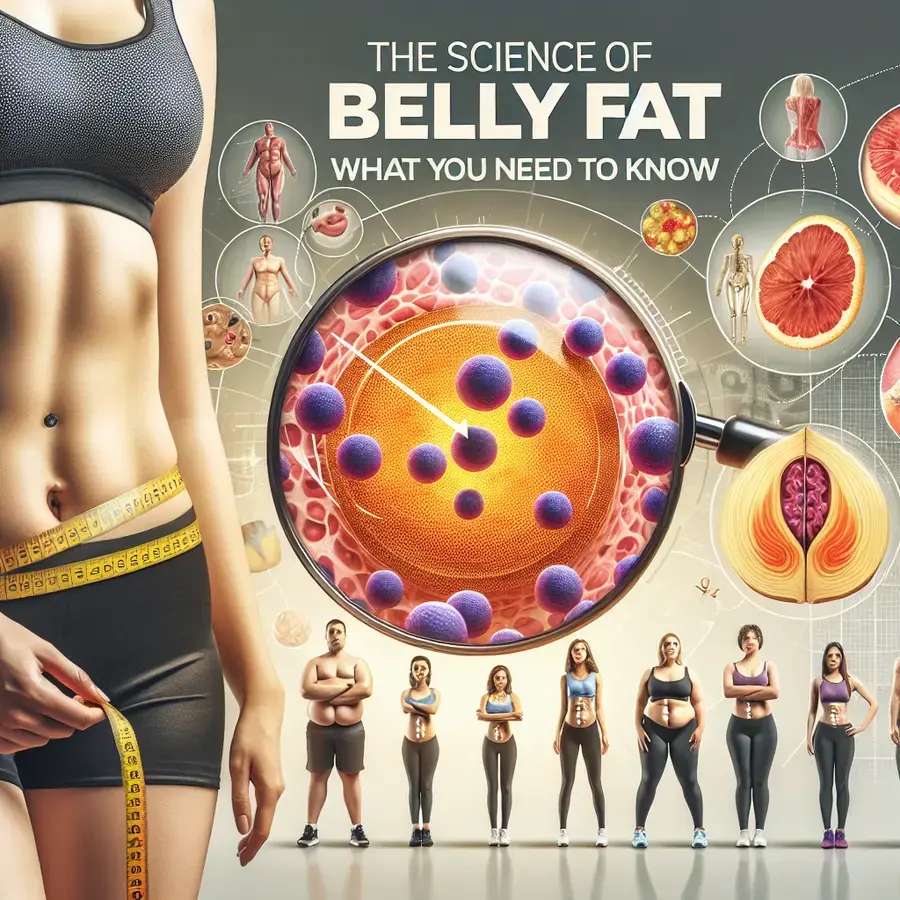The Science of Belly Fat: What You Need to Know

Belly fat, often referred to as visceral fat, is not just a matter of concern for your physical appearance but also a significant health risk. Unlike subcutaneous fat, which lies just under the skin, visceral fat is stored deep within the abdominal cavity, surrounding your vital organs. This positioning of belly fat makes it particularly dangerous as it has been linked to a myriad of health issues including type 2 diabetes, heart disease, and certain cancers.
Understanding the science behind belly fat is crucial for anyone looking to manage their weight and improve their overall health. The body stores fat when there is an excess of calories consumed versus calories expended. However, factors such as genetics, hormones, and lifestyle choices can influence where this fat is deposited. For instance, cortisol, a hormone released in response to stress, has been associated with an increase in belly fat. Additionally, as we age, hormonal changes and a natural decrease in metabolic rate can make it more challenging to keep off abdominal fat.
It’s also important to debunk the myth of “spot reduction.” Despite what many fitness programs may claim, it’s not possible to lose fat from just one specific area of the body through diet or exercise alone. Instead, a holistic approach that creates a caloric deficit and includes both cardio and strength training is necessary for reducing overall body fat, including belly fat.
Actionable Tip: Start tracking your daily food intake and exercise to understand your current caloric balance. Awareness is the first step towards making the necessary adjustments to your lifestyle.
Transform Your Diet to Fight Belly Fat
The foods you eat play a critical role in managing belly fat. A diet high in processed foods, sugars, and saturated fats can contribute to the accumulation of visceral fat, while a balanced diet rich in whole foods can help combat it. Here are four key dietary changes to consider:
- Increase Fiber Intake: Foods high in fiber, such as fruits, vegetables, legumes, and whole grains, can help you feel full longer and reduce the overall number of calories you consume. Additionally, some types of fiber can help regulate blood sugar levels, reducing the likelihood of fat accumulation around the abdomen.
- Choose Healthy Fats: Incorporate sources of monounsaturated and polyunsaturated fats, like avocados, nuts, seeds, and fish. These healthy fats can help improve your heart health and satiety levels, preventing overeating.
- Limit Added Sugars and Refined Carbs: Foods high in added sugars and refined carbohydrates can spike your blood sugar and insulin levels, leading to fat storage around the midsection. Opt for whole grains and natural sweeteners in moderation.
- Stay Hydrated: Drinking plenty of water is essential for overall health and can aid in weight loss. Sometimes thirst is confused with hunger, leading to excess calorie consumption. Staying hydrated can help prevent this.
Actionable Tip: Begin incorporating one new fiber-rich food into your diet each week. This gradual change can lead to sustainable dietary habits that support long-term health and weight management.
Effective Exercise Strategies for Reducing Belly Fat
While diet plays a crucial role in managing belly fat, exercise is equally important. A combination of aerobic (cardio) exercise and strength training has been shown to be most effective in reducing visceral fat. Here’s how to structure your workout routine:
Aerobic Exercise: Activities like walking, running, cycling, and swimming increase your heart rate and burn calories. For significant belly fat reduction, aim for at least 150 minutes of moderate-intensity or 75 minutes of high-intensity aerobic exercise per week, as recommended by the American Heart Association.
Strength Training: Building muscle mass through weight lifting or bodyweight exercises can help boost your metabolism and reduce body fat percentage. Focus on compound movements that target multiple muscle groups for maximum efficiency. Aim to include strength training exercises at least two days per week.
High-Intensity Interval Training (HIIT): HIIT involves short bursts of intense exercise followed by brief rest periods. This type of workout can be incredibly effective for burning fat and improving cardiovascular health in a shorter amount of time compared to steady-state cardio.
Consistency and progression are key when it comes to exercise. Gradually increasing the intensity and duration of your workouts as you become more fit will help prevent plateaus and continue fat loss.
Actionable Tip: Schedule your workouts as you would any other important appointment. Consistency is more important than intensity when starting out. Aim for regular, manageable sessions and gradually increase your effort as your fitness improves.


